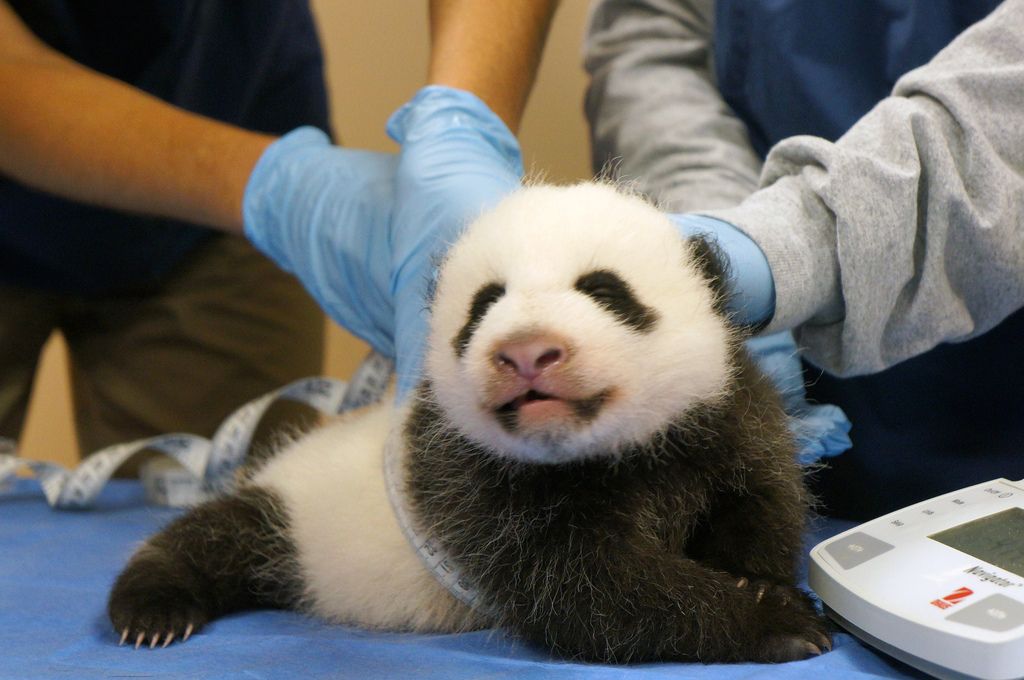Post-Shutdown Panda Cam Fix Stymied: Fans Overwhelm Site

The Smithsonian National Zoo's panda cam began operating again this morning, but that doesn't mean you'll get to watch Mei Xiang's 8-week-old cub stretch and wriggle about.
"The panda cam went live at 10:36 this morning I believe," said Devin Murphy, communications officer at the zoo in Washington, D.C. "Within 10 minutes we had reached the maximum number of connections that we can accommodate for the panda cam, so we've been troubleshooting those issues throughout the day."
A maximum of 850 visitors at any one time can connect to the panda cam, Murphy told LiveScience. To help ease the cam deluge, zoo officials have set the connections in a way that allows visitors to sit and watch for just 15 minutes before they have to refresh or the connection is lost. [In Photos: Giant Panda Mei Xiang Gives Birth]
A workaround? Check out the Smithsonian Zoo's app, which streams the panda cam uninterrupted, Murphy said.
The camera may have been dark during the 16-day federal government shutdown, but Mei Xiang's cub has been busy growing up.
She now weighs 5 pounds (2.6 kilograms), which is up from her 3.07-pound (1.39 kg) weigh-in on Sept. 26. And her eyes are now partially open. On Oct. 4 (Day 4 of the shutdown) the cub's right peeper began to open, and by Oct. 11 both eyes were partially open. With fully open ears, the panda cub also reacts to noises in her zoo habitat, according to zoo officials.
Mei Xiang (may-SHONG) is leaving the cub for longer periods on her own; the little one is scooting around the den, eating, drinking, interacting with keepers and even sneaking outside the panda house for short stints without her mama. And she may be scooting about for some time as panda cubs don't tend to start walking until about 4 months old. Even so, zookeepers say she can already push up on her two front legs.
Sign up for the Live Science daily newsletter now
Get the world’s most fascinating discoveries delivered straight to your inbox.
The panda cam is not just a pastime for fans; zookeepers were glued to the streaming video in August looking for any signs the mama was going to give birth, which happened on Aug. 23 at 5:23 p.m. ET.
The next day, Mei Xiang gave birth to a second cub, though this was a stillborn. Though the stillborn twin was never alive and never fully formed, its mother groomed it for about 17 minutes, zookeepers said at the time.
Like other giant pandas in captive breeding programs, Mei Xiang was artificially inseminated. Natural breeding attempts between Mei Xiang and the zoo's male panda Tian Tian were unsuccessful, leading scientists to artificially inseminate the female twice on March 30.
Follow Jeanna Bryner on Twitter and Google+. Follow us @livescience, Facebook & Google+. Original article on LiveScience.com.
Jeanna Bryner is managing editor of Scientific American. Previously she was editor in chief of Live Science and, prior to that, an editor at Scholastic's Science World magazine. Bryner has an English degree from Salisbury University, a master's degree in biogeochemistry and environmental sciences from the University of Maryland and a graduate science journalism degree from New York University. She has worked as a biologist in Florida, where she monitored wetlands and did field surveys for endangered species, including the gorgeous Florida Scrub Jay. She also received an ocean sciences journalism fellowship from the Woods Hole Oceanographic Institution. She is a firm believer that science is for everyone and that just about everything can be viewed through the lens of science.











